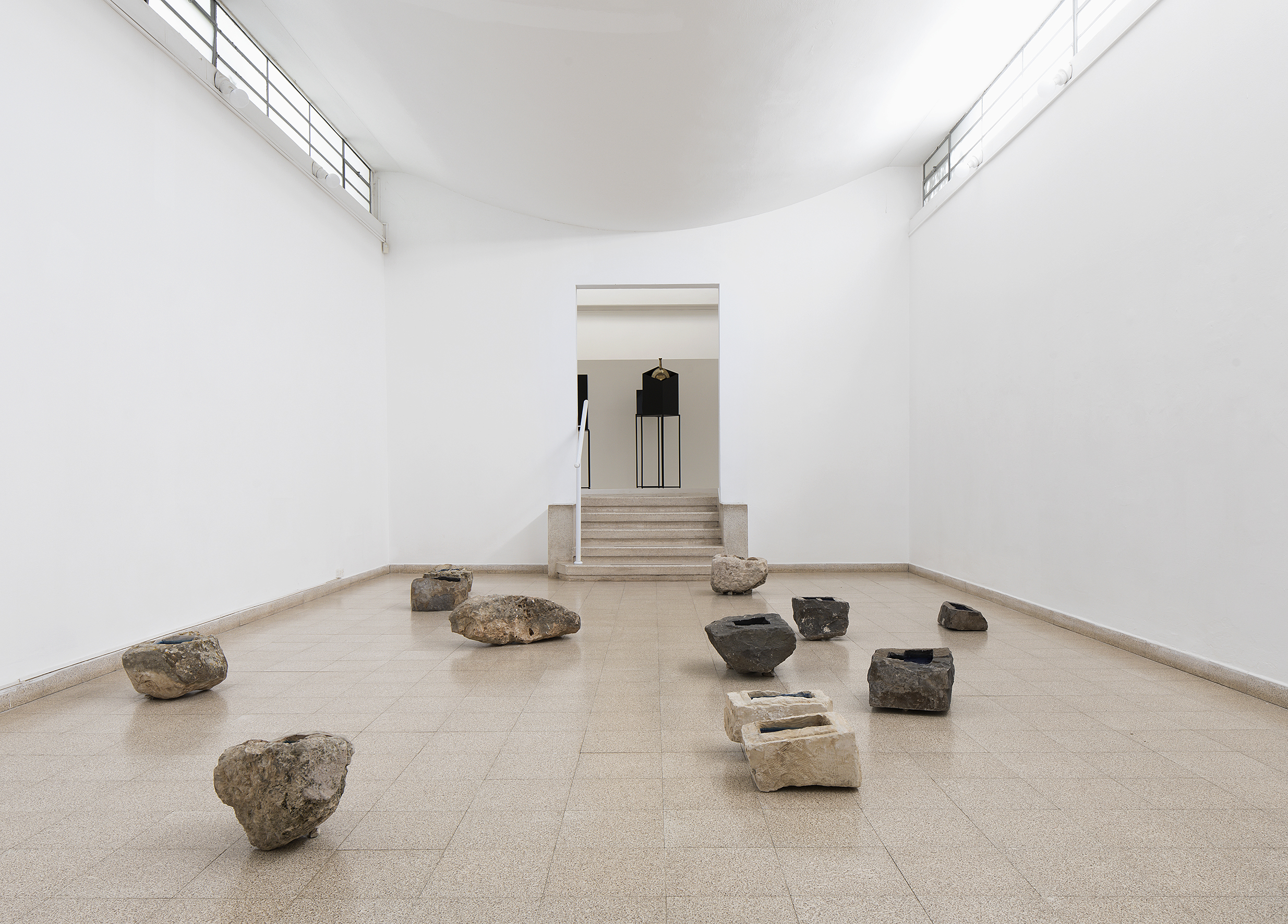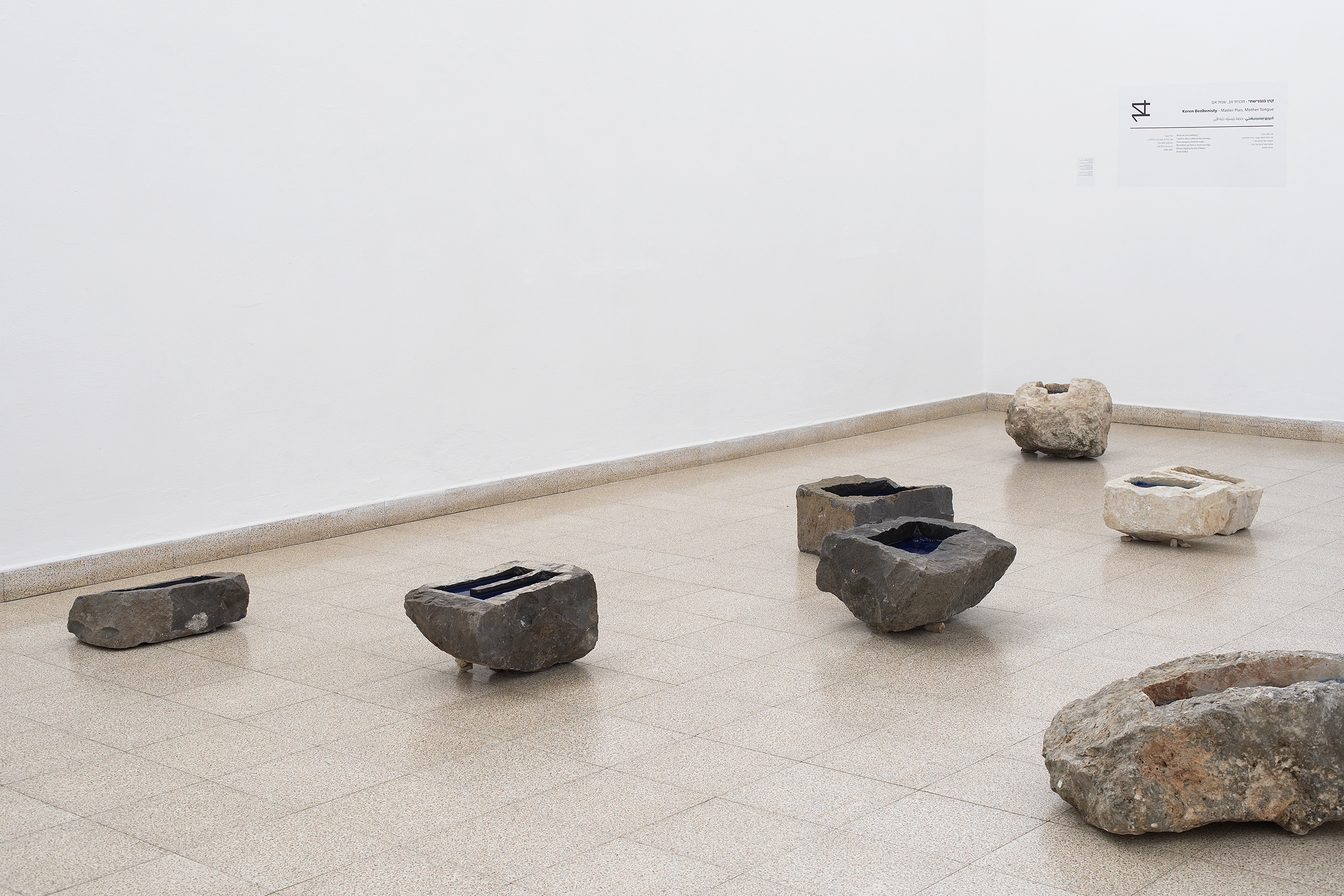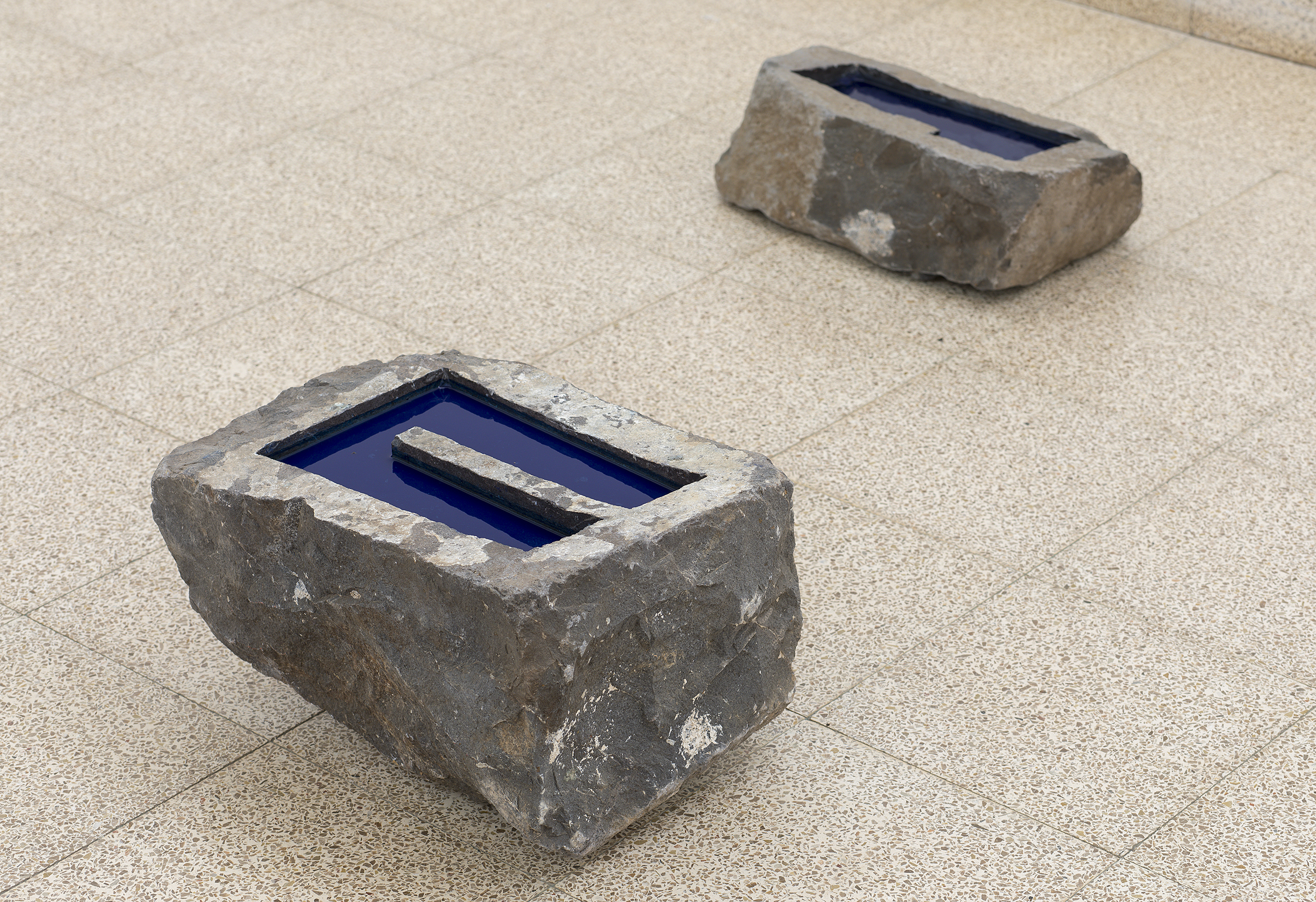
Master Plan, Mother Tongue
A series of collages made with cyanotypes and pages from the original publication of the museum (1970). A series of carved stones, ink, water. Made in collaboration with Aiman Zreiqi. Ein Harod Museum, IL. 2019
Master Plan, Mother Tongue is a two-part installation that explores the often-overlooked relationship between text and architecture through particular material fragments from the history of the Mishkan Le’Omanut. While any architectural drawing can be understood as a document that translates a three-dimensional structure into a two-dimensional medium, a master plan is distinct in that it not only details an existing structure but also provides a practical and conceptual framework for future growth by subsequent builders. In this sense, the Hebrew phrase for master plan, father plan (Tochnit Av), is particularly apt in its generative associations.
For her project, Benbenisty selected a catalogue of the museum’s collection remarkable mostly for the number of languages it contains—ten in all. A brief description of the museum, its history, mission, and holdings can be found in Arabic, English, French, German, Hebrew, Yiddish, Russian, Spanish, Japanese, and, perhaps most surprisingly, Esperanto. Treating the catalogue pages as sculptural material, Benbenisty has literally carved into the printed words of these many languages, then layered and recombined them until they lose their semantic meanings. She then covered these layered compositions in light sensitive solution and exposed them to the sun, transforming them into cyanotypes, recalling the process through which architectural blueprints are produced.
Master Plan, Mother Tongue focuses less on the intermedial translation from text to architecture than the difficult translation of a utopian project from paper to real time and space, whether it be the Mishkan, Ein Harod, or the Zionist project writ large. Kafka repeatedly addressed the impossibility of achieving utopia in his writing. His rumination on the Pit of Babel, published in Parables and Paradoxes, replaces the act of building with digging, thereby reversing the vertical thrust of the original story. By bringing Babel back down to earth, Kafka evocatively illustrates how the transcendent unity of the tower, which embodies the ideal of a single, universally understood language, is only materialized in heterogenous, subterranean mazes that imperfectly intersect, overlap, and remain forever incomplete. In returning to the Mishkan’s catalogue as the source for Master Plan, Mother Tongue, there is a particular irony that this multilingual flurry occurred in Israel—a state whose majority-Jewish inhabitants are almost entirely descended from immigrants who were discouraged from speaking their native languages in favor of the recently secularized and reinvented Biblical language of Hebrew. To speak only Hebrew was in a sense to “speak with the same lip,” as the Bible describes the builders of the Tower of Babel before God’s punishment. The universalist gusto which led to the translation of the Ein Harod catalogue into as many languages as possible occurred only later in 1970, after the Hebrew language had become entrenched, replacing old diasporic languages as the mother tongue of the new Israeli population.
Chelsea Haines (excerpts from the catalogue essay)




Installation views, 14 Interpretations, curated by Yaniv Shapira and Tal Gelfer at Mishkan Ein Harod Museum, IL
(Photo credit Elad Sarig)